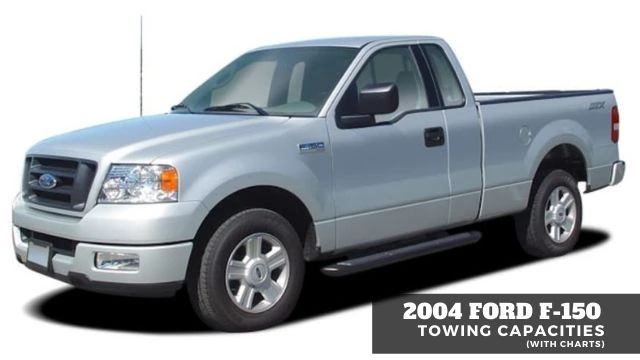The 2004 Ford F-150 had a lot of the same specifications and options when it came to the towing capacity that we noticed when we compared them with other model years, but were able to accomplish a capacity rating of 10,000 pounds!
As remarkable as that may sound though, there were similarly other versions of this model year truck that had a more limited peak capacity (as little as 5,900 pounds), which is an enormous variation.
Your owner's handbook (manual) is packed with all sorts of valuable information and I strongly advise that you carefully read through it and that you follow all of Ford's requirements and recommendations.
2004 F-150 Overview
Overall Capacity: The overall towing capacity for the 2004 Ford F-150s ranged from 5,900-10,000 lbs. for the standard model trucks and for the Heritage models, the range was quite a bit different and was listed at 2,000-8,300 lbs.
The overall capacity was dependent upon a few different variables which included things like the cab style you had equipped on your truck, what axle ratio you had, what's your wheelbase length was, whether you had a two-wheel drive or four-wheel drive model and what type of engine you had equipped.
Capacity By Trim Options: I listed the trim options below and looked up what engine options were available for each trim level and assigned each trim level their respective capacity range. Keep in mind that certain trim levels might have limitations that would affect their maximum capacity rating, like an axle ratio that was not available, etc.
- XL: 5,900-10,000 lbs.
- STX: 5,900-7,100 lbs.
- XLT: 5,900-10,000 lbs.
- FX4: 6,900-10,000 lbs.
- Lariat: 6,900-10,000 lbs.
- Heritage XL: 2,000-8,300 lbs.
- Heritage XLT: 2,000-8,300 lbs.
By Engine Options: Breaking the data down further for these trucks, we can see that the 4.6 L engine had a slightly lower capacity range, compared to the 5.4 L engines, especially on the higher end of the spectrum. The Heritage models had a completely different set of engine options than the standard models.
Keep in mind that I did include conventional hitch metrics, along with the fifth wheel hitch metrics as a whole.
- 4.6L: 5,900-7,100 lbs.
- 5.4L: 6,900-10,000 lbs.
- 4.2L (Heritage Models): 2,000-5,700 lbs.
- 4.6L (Heritage Models): 2,000-7,200 lbs.
- 5.4L NGV (Heritage Models): 5,800 lbs.
- 5.4L Bi-Fuel (Heritage Models): 7,700-8,300 lbs.
Conventional and 5th Wheel Specs: Lorem ipsum dolor sit amet, consectetur adipiscing elit, sed do eiusmod tempor incididunt ut labore et dolore magna aliqua. Et pharetra pharetra massa massa ultricies mi quis hendrerit. Et ultrices neque ornare aenean euismod elementum nisi quis eleifend.
- Conventional: 4,000-5,000 lbs.
- 5th Wheel: 4,000-5,000 lbs.
The Four Different Tow Charts:
There were a total of four different charts for these model-year trucks and these were listed as a conventional chart, a fifth wheel chart and then two separate charts that contain the Heritage models specs with both conventional hitch and a fifth wheel hitch metrics.
If we look at the charts, we can see that the cab style you had equipped on your truck is an important metric, along with whether you had a two-wheel drive or four-wheel drive model and what your wheelbase length was. On the left-hand side of the table, we can see that the two different engine options were listed, along with the axle ratios and the gross combined weight ratings.
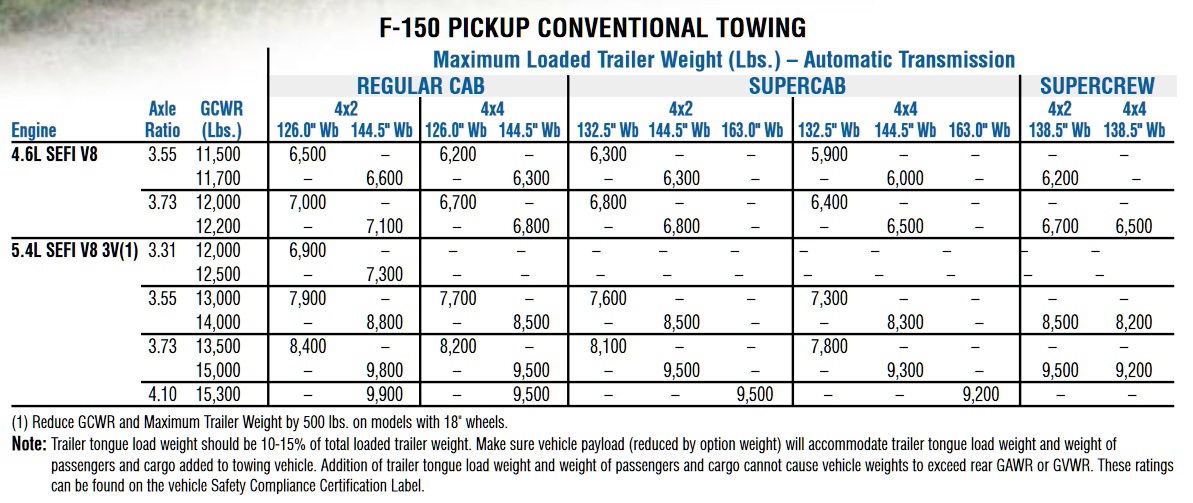
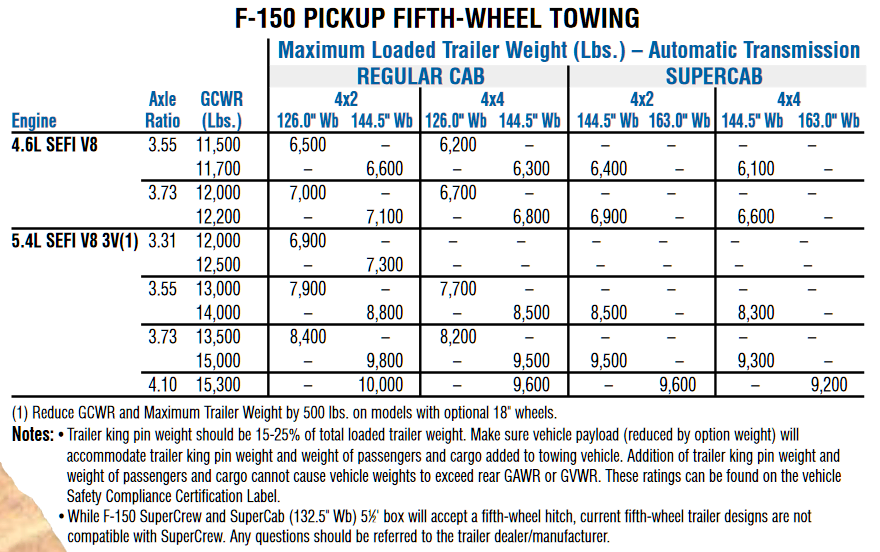
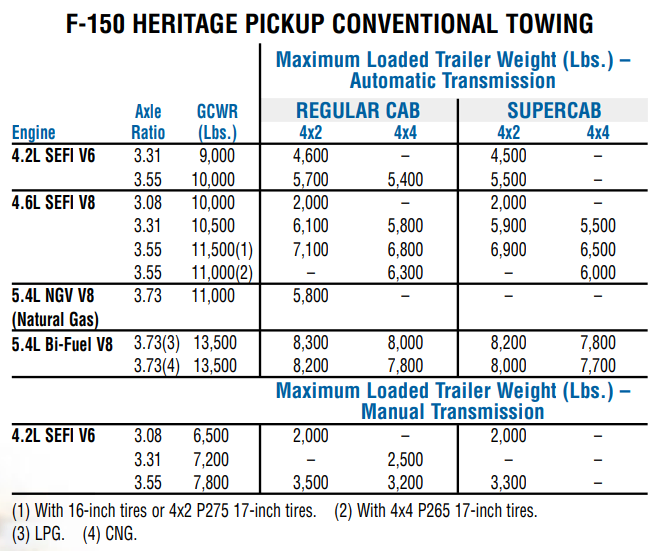


Other Important Information...
As I was looking through the sources of information I used for the research of this article, I discovered a couple of more chunks of info that I thought was worth posting.
I was able to find the tow equipment and trailer packages that the 2004 F150s came equipped with or had the option of having installed. If you look on the first image I have posted you can see the three columns I've outlined in the red box and the first column was the standard equipment, along with the two other tow package options that were available for the standard trucks and the Heritage models.
The next image is all about the hitch capacities, which includes the rear step bumper type of hitch and the conventional hitch specs. It is important to point out that in order to achieve some of the higher ratings that we saw on the charts, you will have to have a weight distributing hitch installed, otherwise you are limited to a 5,000 lb limit.
The last two images are screenshots I found in the brochure and as you can see all of the tow packages were an optional accessory and were not standard on any of the trim levels for these 2004 trucks. It also lays out what was included in one of these packages.
I was also able to find the two different engine options, along with the trim levels that had these engines offers as a standard option and as an optional upgraded option.
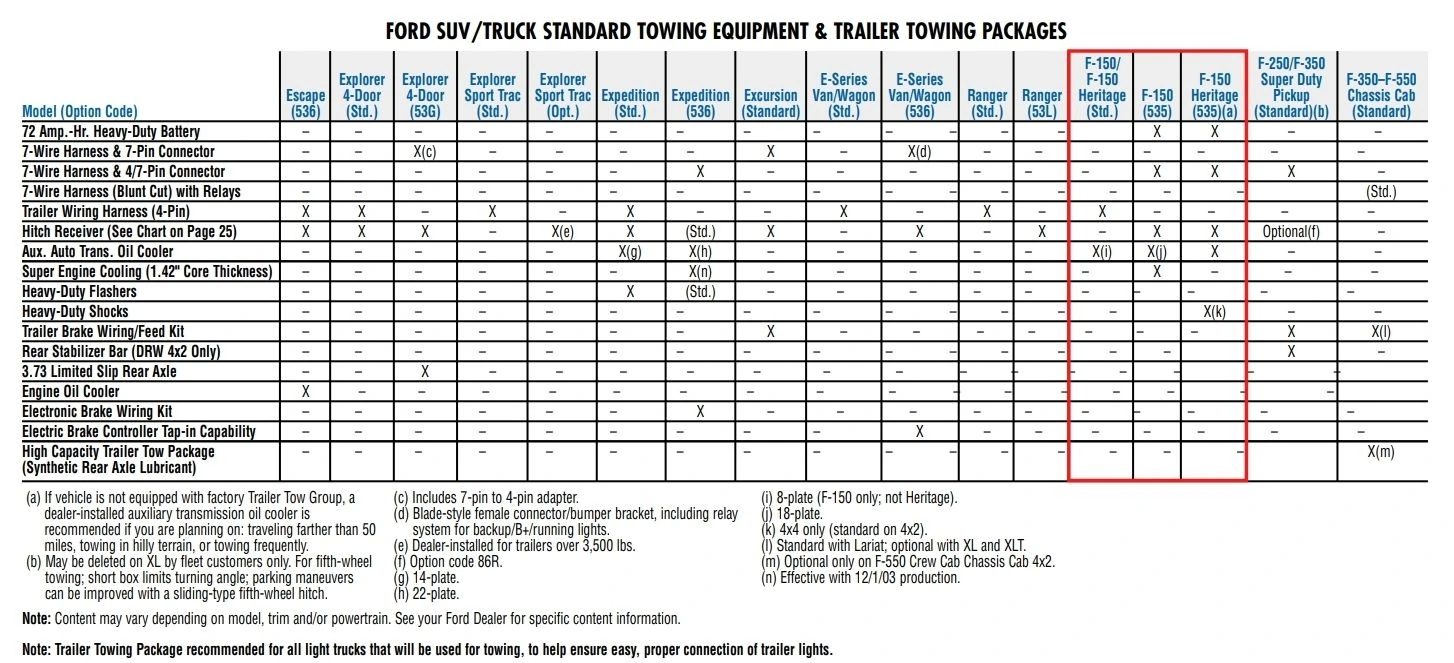
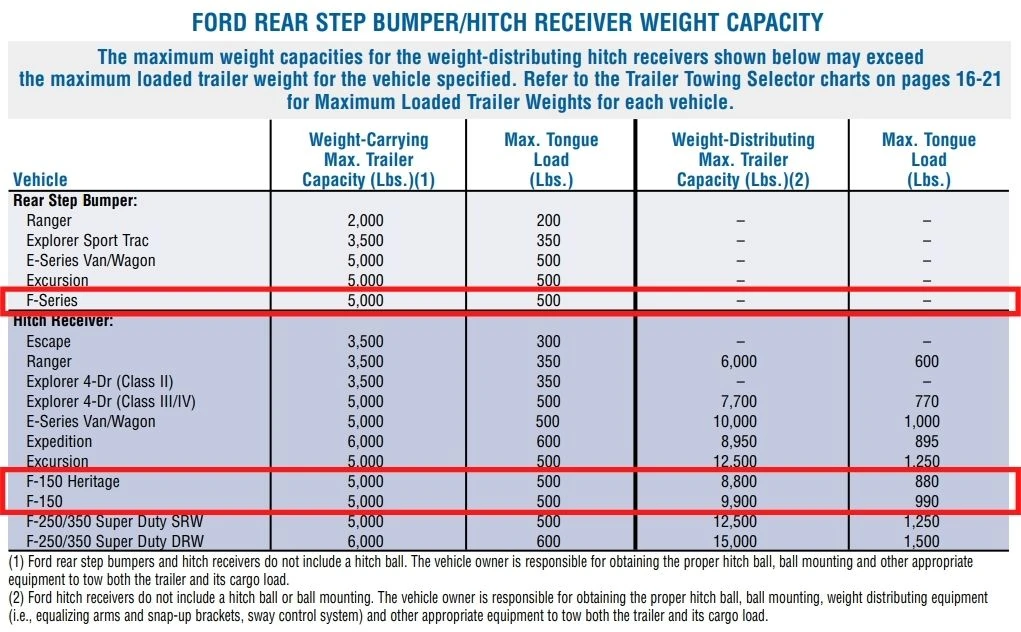


S = Standard O = Optional - = Unavailable
The Certification Label...
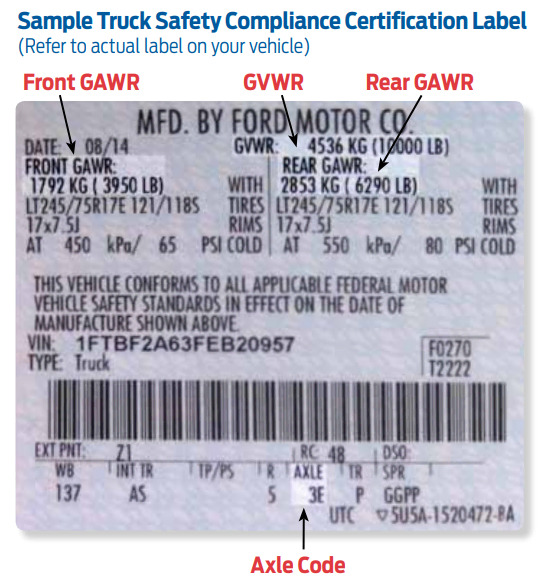
GVWR & GAWRs: The gross vehicle weight rating and gross axle weight rating specs were nowhere to be found when I was looking through the owner's manual or the very valuable tow guide that Ford provides when conducting the research for this article, however, after doing a bit more digging, I managed to figure out where this specific data could be located.
All you have to do is open the driver side door on your vehicle and you will spot a sticker that looks a whole lot like the label that's displayed in the image mentioned above and this will provide all types of valuable data pertaining to your truck. The GVWR and both of the GAWRs will be specified along the top part of this label, which is shown in the illustration above.
GCWR: The GCWRs were actually provided in the tables on the left-hand column, slightly to the right of the axle ratios, that makes finding these numbers really easy.
Axle Code: The axle code can be found at the bottom of the sticker and has two digits listed. Typically, there is a chart in the guide that tells us what axle ratio belongs to which code, but for the 2004 brochure, this was not available.
There are 3rd party websites they have this information available to you or you can climb under your truck and look for a small metal tag that will have the axle ratio engraved into it.
A Few Helpful Links:
I only used two resources for the online research of this blog post and I have provided these two resources, for those folks out there that may want to check those resources out for yourself.
The majority of the details in this post came from the resource guide, which includes most of the pictures, still, the owner's manual likewise came in valuable and is where I located all of the other supplemental details.
Last updated on April 27th, 2022 at 06:41 pm
